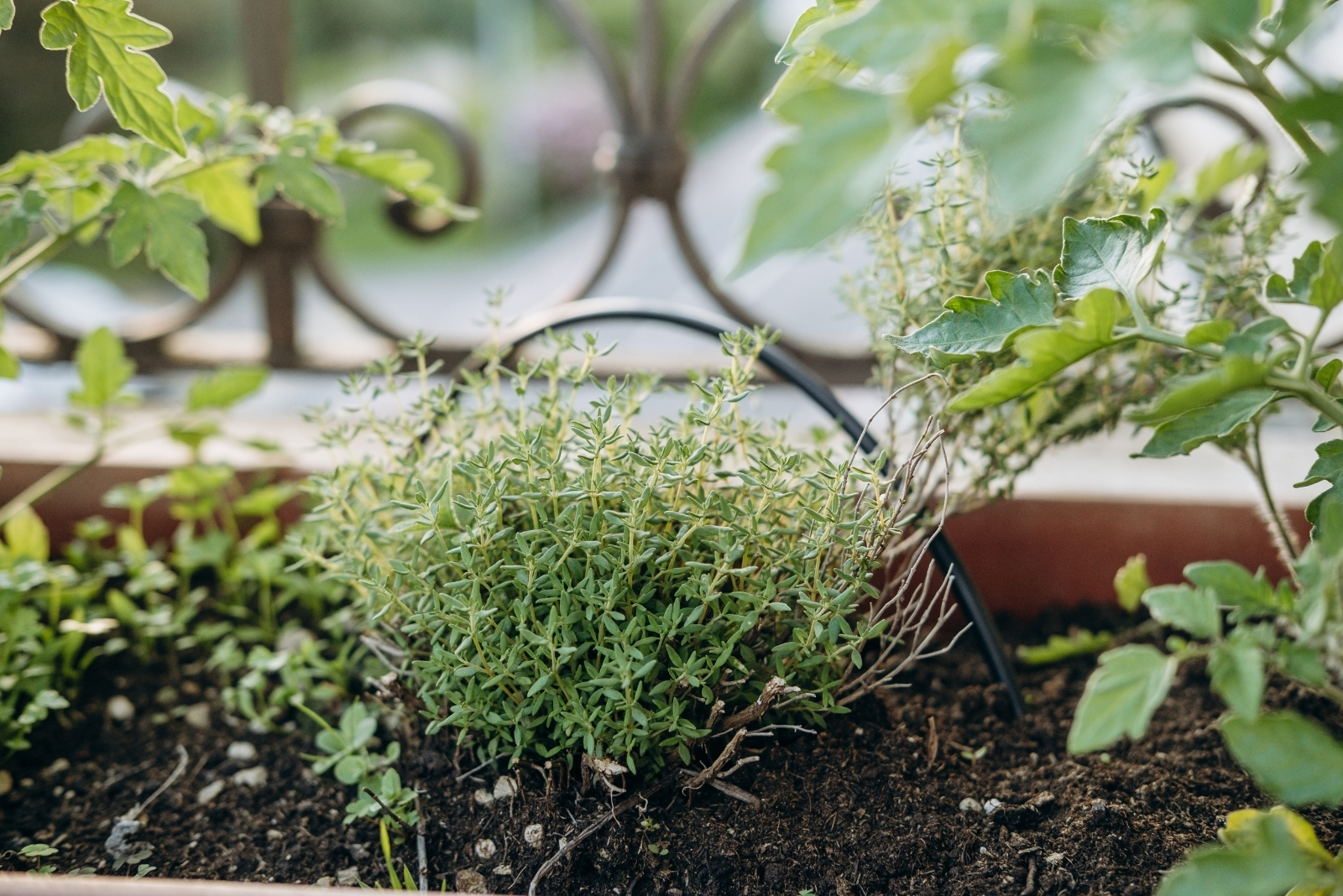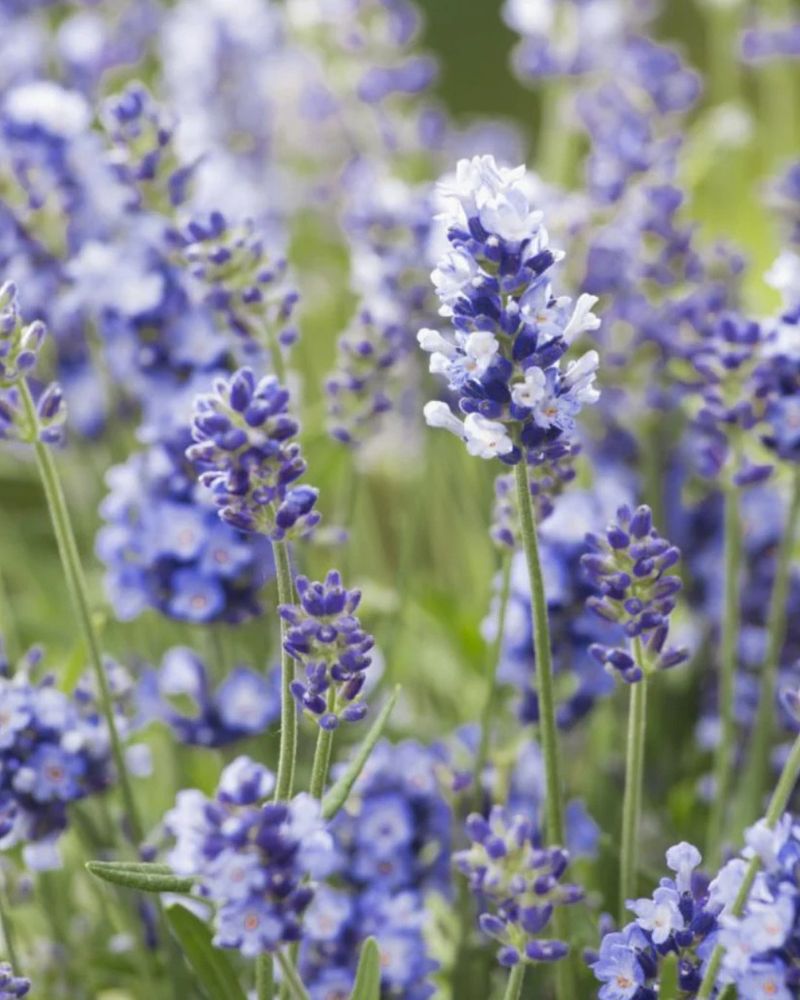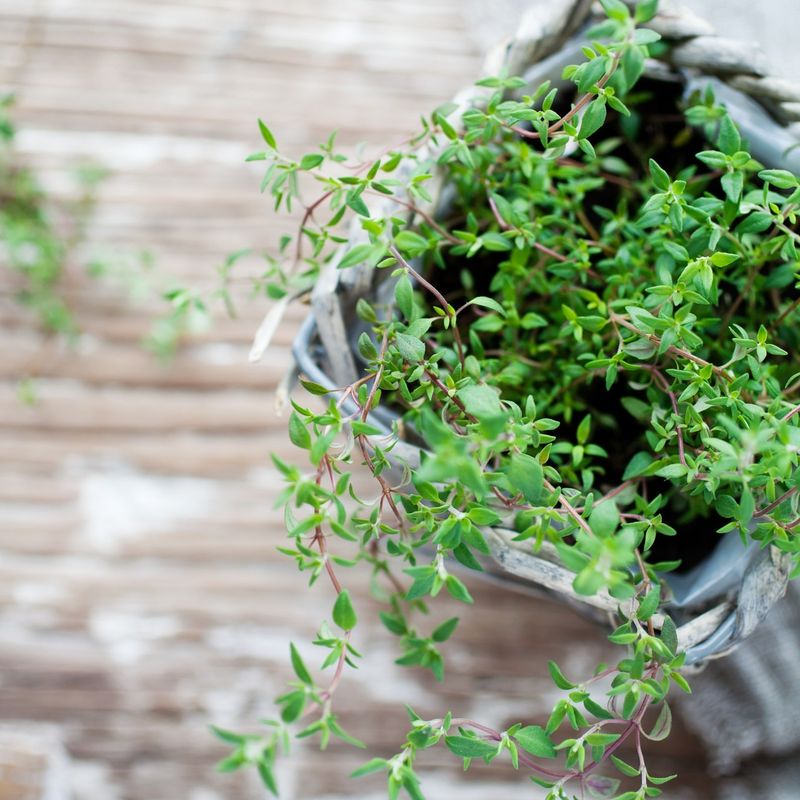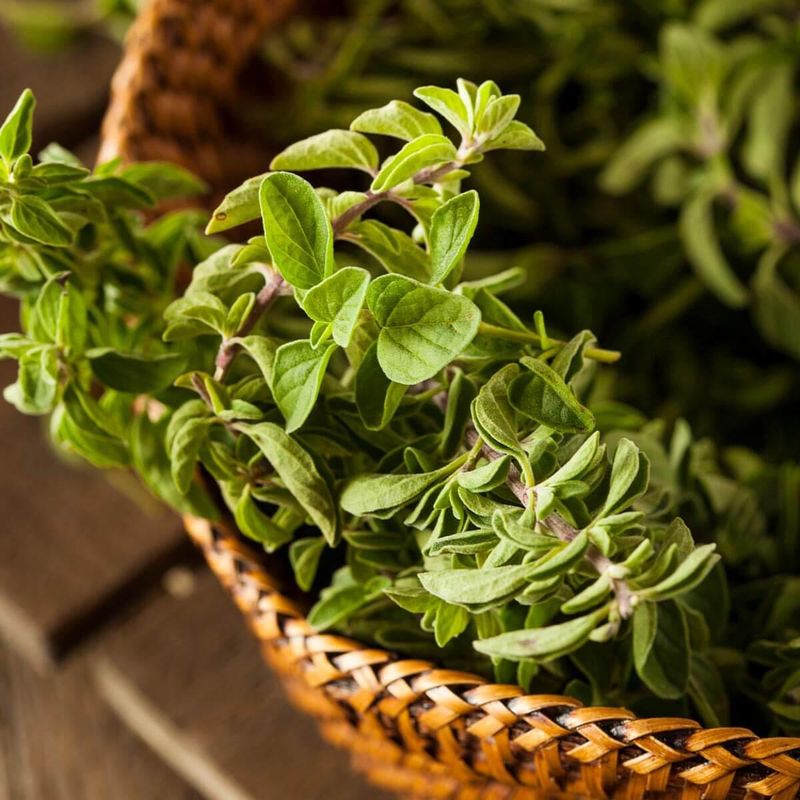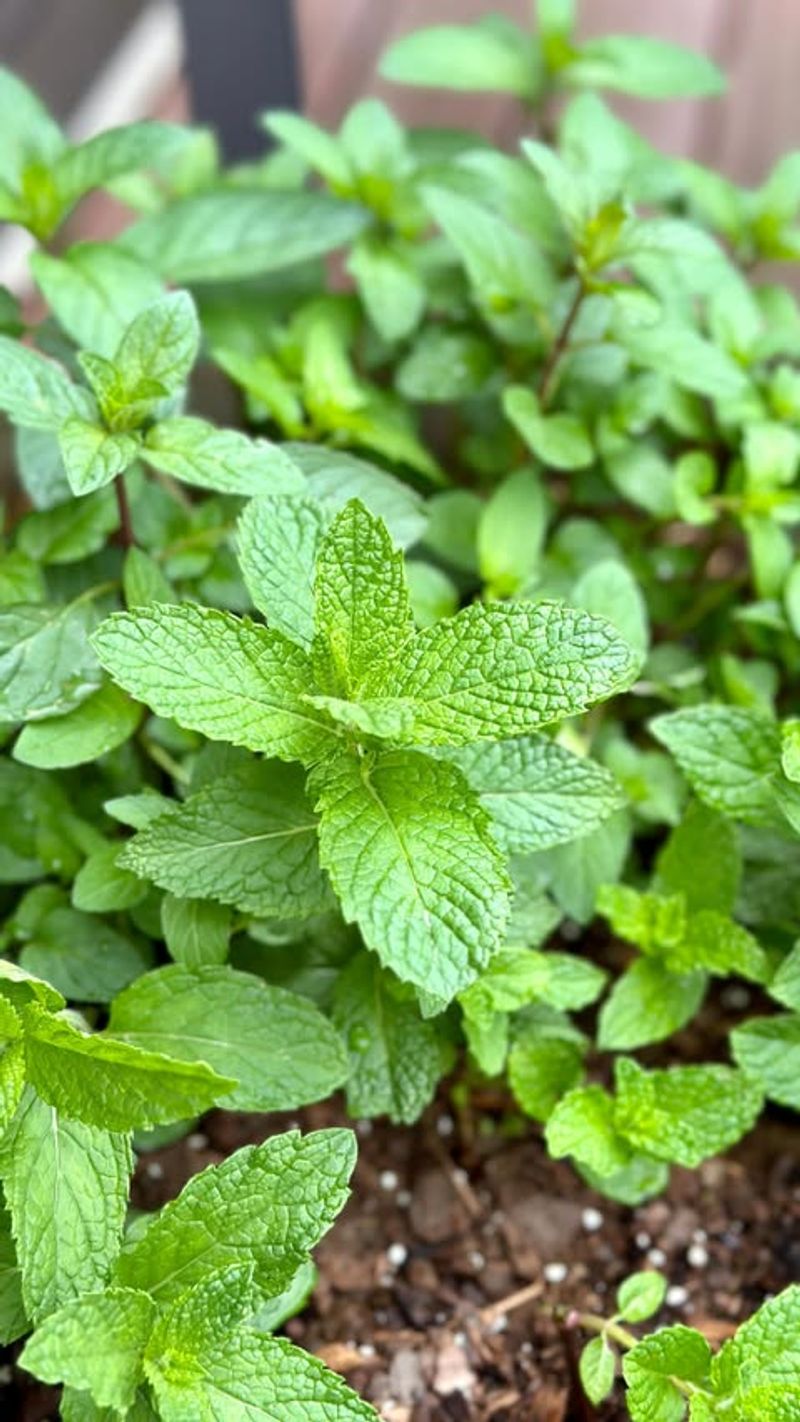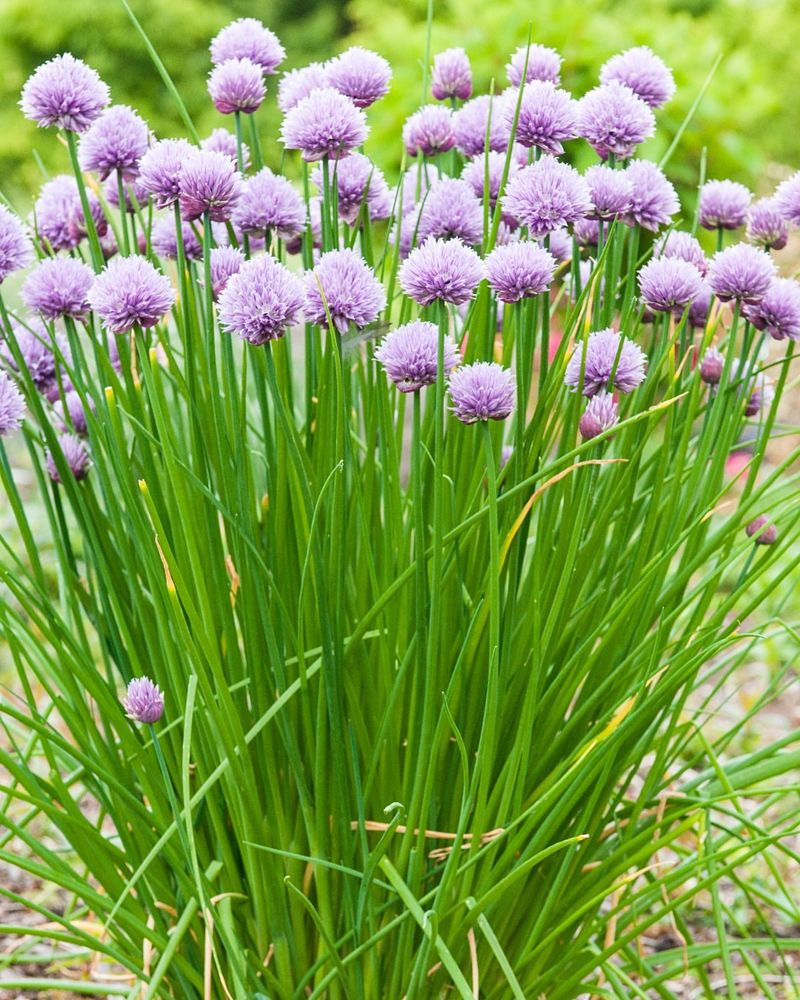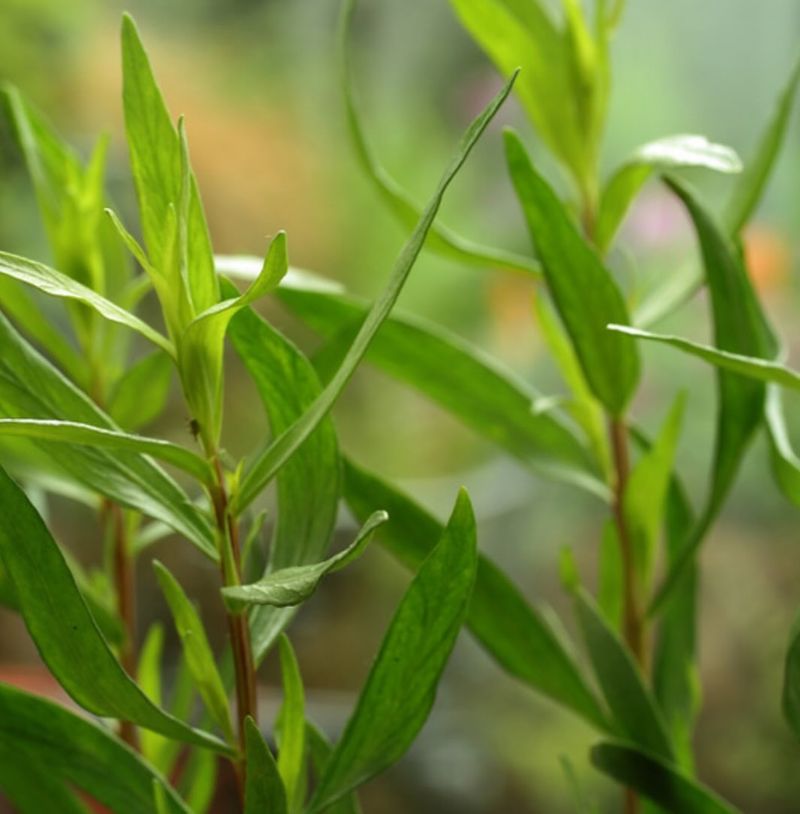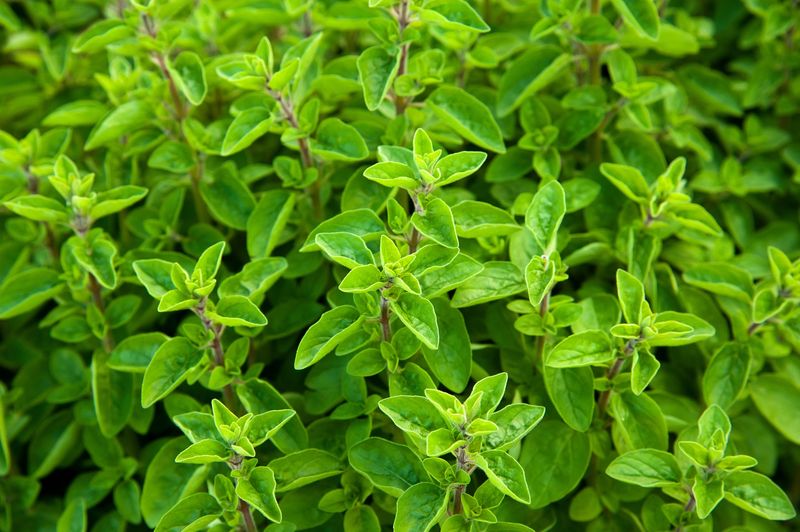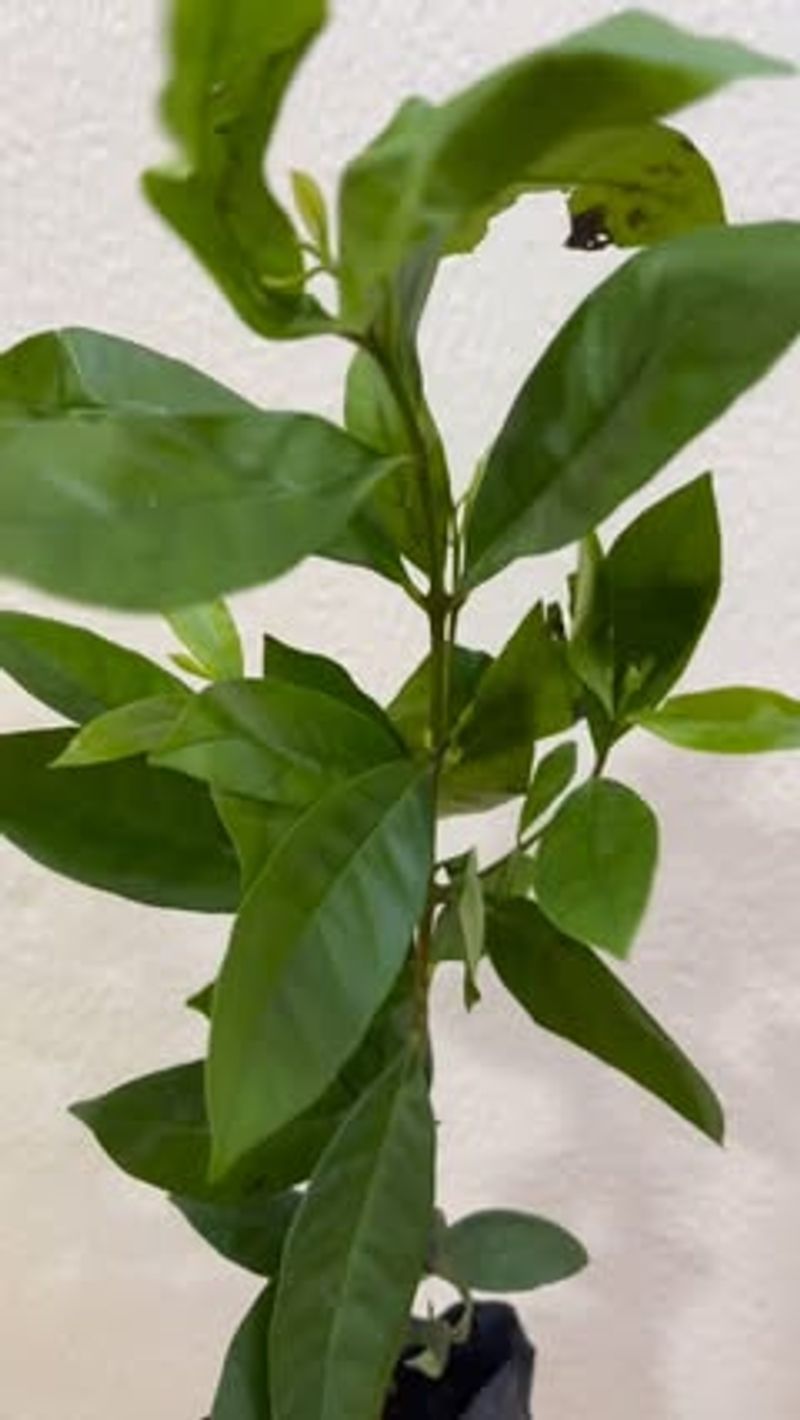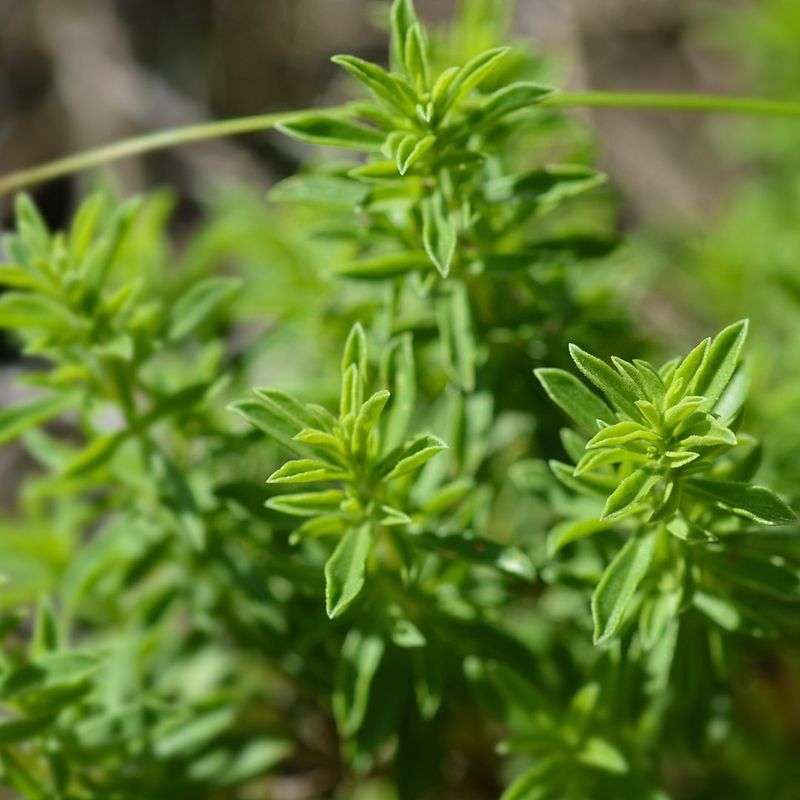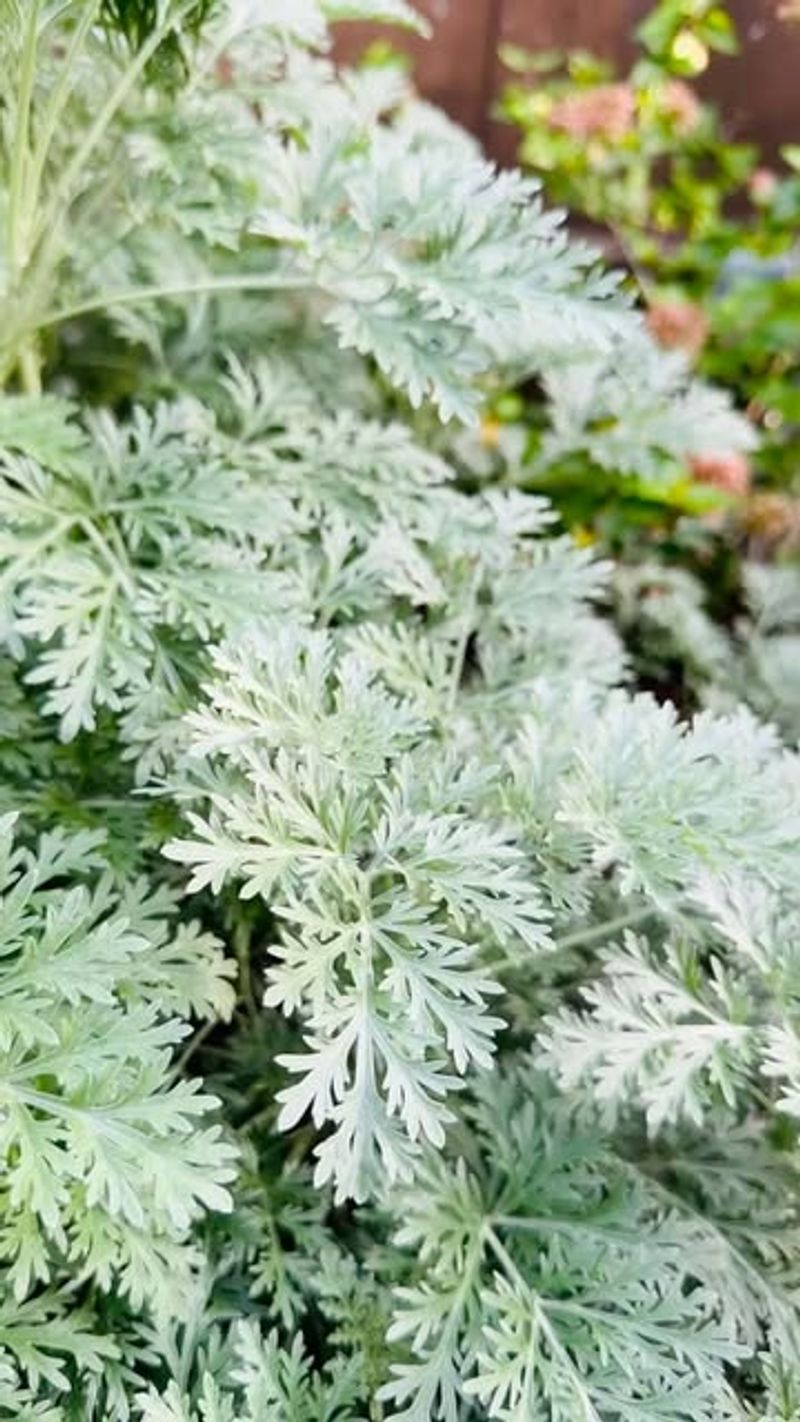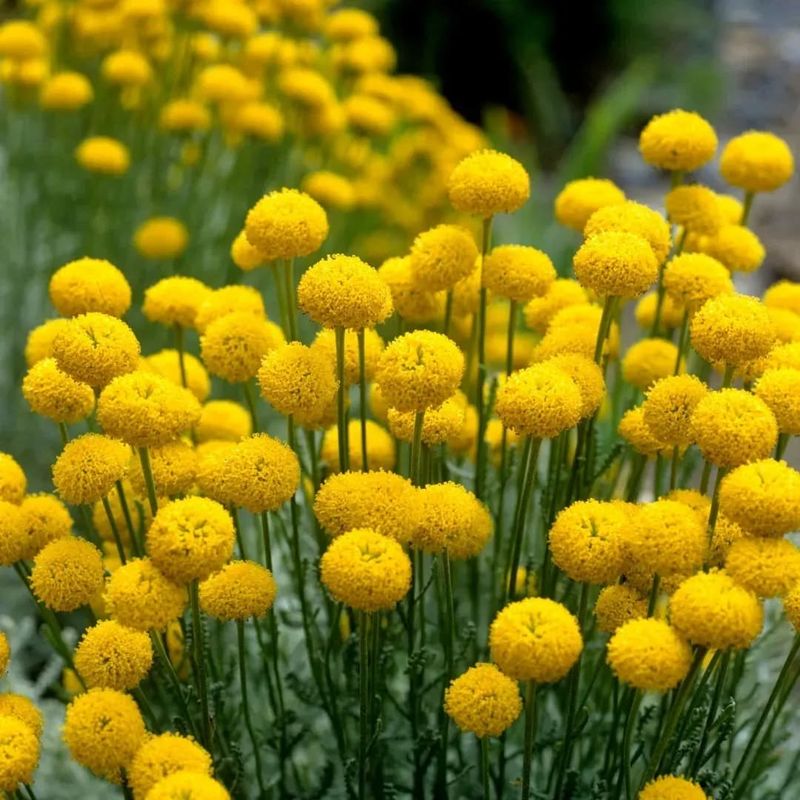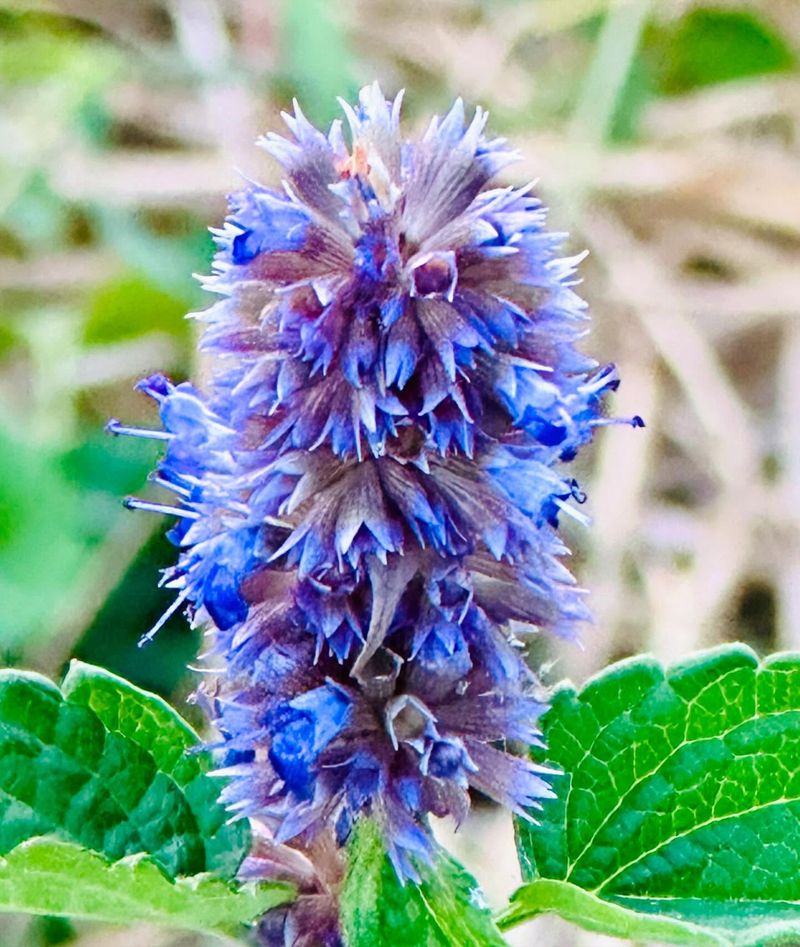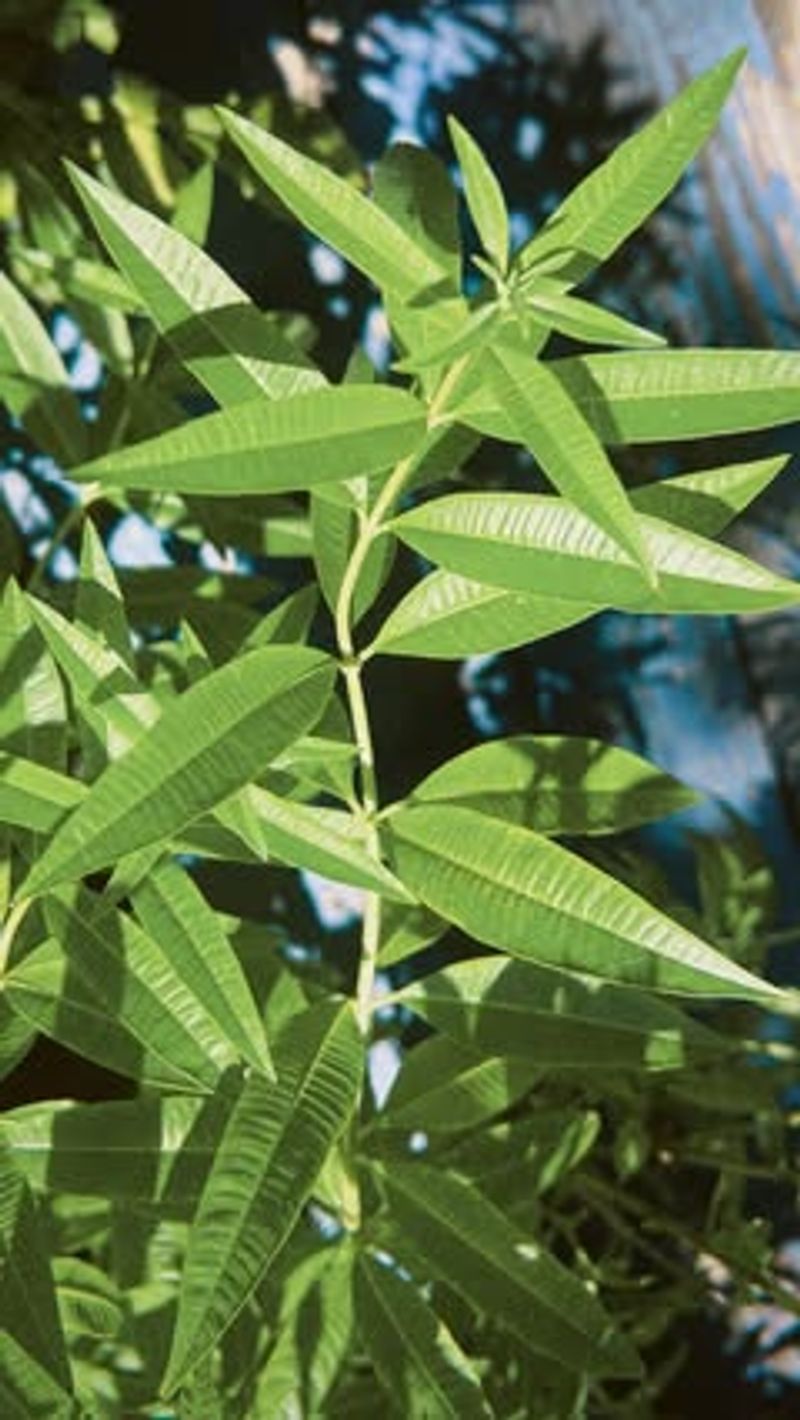In Nevada, some herbs are surprisingly tough and thrive even when you forget about them now and then. I love planting these resilient greens—they’re practically worry-free but still full of flavor.
From sprinkling fresh leaves into meals to garnishing drinks, they make daily cooking a little brighter. These herbs prove that even a low-maintenance garden can be rewarding.
With plants that love neglect, your Nevada garden stays lively with minimal effort.
1. Rosemary
Once established in Nevada’s sandy soil, rosemary practically takes care of itself. The woody stems and needle-like leaves conserve moisture brilliantly in our desert heat.
Many Nevada gardeners find their rosemary bushes growing for years with minimal attention. Its pine-like fragrance intensifies when grown in our dry conditions, making it even more flavorful for cooking.
2. Lavender
Silver-leaved and sun-loving, lavender positively flourishes in Nevada’s bright, arid climate. The less you fuss over it, the more fragrant blooms you’ll get from this Mediterranean native.
Many Nevada homeowners use lavender as a water-wise landscaping option. Its drought resistance makes it perfect for those weeks when you forget to water, and the bees absolutely adore its purple flowers.
3. Thyme
Low-growing and tough as nails, thyme spreads happily across Nevada’s rocky soil with minimal care. Its tiny leaves conserve moisture brilliantly, making it a champion survivor during hot summers.
Walking on thyme releases its wonderful aroma, making it perfect for Nevada pathways. Different varieties offer lemon, caraway, or classic thyme flavors, all thriving with the same neglectful treatment.
4. Sage
Velvety gray-green leaves make sage not only tasty but beautiful in Nevada landscapes. Its deep roots seek out underground moisture, eliminating the need for regular watering.
Nevada gardeners appreciate how sage keeps producing aromatic leaves year after year. The plant becomes woodier and more drought-resistant with age, practically begging to be ignored in our desert climate.
5. Oregano
Hardy oregano practically laughs at Nevada’s summer heat. Its spreading habit creates a fragrant ground cover that chokes out weeds while requiring almost no maintenance.
The flavor intensifies in Nevada’s dry conditions, making it more potent than store-bought varieties. Many local gardeners find their oregano returns stronger each year, surviving winter freezes and summer scorchers alike.
6. Mint
Surprisingly tough despite its lush appearance, mint adapts well to Nevada’s challenging conditions. Give it a slightly shady spot and minimal water, and it’ll reward you with aromatic leaves for mojitos and tea.
Nevada gardeners often grow mint in containers to control its spreading habit. Even with neglect, mint’s survival instinct is legendary – sometimes it’s the only herb that makes it through our harshest summers.
7. Chives
Hardy and persistent, chives return year after year in Nevada gardens despite minimal care. Their slender leaves and pretty purple pom-pom flowers add visual interest while requiring almost no maintenance.
Many Nevada gardeners find chives self-seed readily, creating new plants without any effort. Their mild onion flavor remains consistent regardless of how little attention you pay them in our dry climate.
8. Tarragon
French tarragon’s licorice-like flavor actually improves when the plant is slightly stressed in Nevada’s dry heat. Its deep root system helps it survive long periods without water, perfect for forgetful gardeners.
Nevada’s hot summers concentrate tarragon’s essential oils, making it more flavorful than pampered plants. Once established, it requires almost no care beyond occasional harvesting to keep it productive.
9. Marjoram
Softer in flavor than its cousin oregano, marjoram thrives in Nevada’s poor soil and infrequent rain. Its small, slightly fuzzy leaves conserve moisture effectively during hot summer months.
Nevada gardeners appreciate marjoram’s ability to withstand neglect while still producing flavorful leaves. The plant’s compact growth habit makes it perfect for rocky areas where other herbs might struggle.
10. Bay Laurel
Surprisingly adaptable to Nevada’s climate, bay laurel grows into a handsome shrub with minimal care. Its leathery leaves conserve moisture, allowing it to thrive even when you forget to water.
Many Nevada gardeners grow bay in containers that can be moved to protected areas during rare freezes. Once established, these Mediterranean natives handle our desert conditions beautifully, providing aromatic leaves for years.
11. Winter Savory
Tough and compact, winter savory handles Nevada’s temperature extremes with remarkable resilience. Its tiny leaves and woody stems conserve moisture brilliantly in our arid climate.
Nevada gardeners find winter savory survives where other herbs fail, providing peppery flavor year-round. The plant’s neat growth habit makes it perfect for rock gardens and other low-water landscape areas.
12. Epazote
This Mexican herb feels right at home in Nevada’s desert conditions. Epazote’s deep taproot allows it to find moisture far below the surface, eliminating the need for regular watering.
Many Nevada gardeners find epazote self-seeds readily, returning year after year without any effort. Its distinctive flavor is essential for authentic bean dishes, and its tough nature matches our challenging growing conditions perfectly.
13. Artemisia
Silver-leaved artemisia varieties like wormwood and southernwood thrive in Nevada’s harsh conditions. Their fuzzy foliage reflects sunlight and conserves moisture, making them champions of neglect.
Nevada gardeners use artemisia as dramatic accent plants in water-wise landscapes. Though not commonly used in cooking, these aromatic herbs repel pests naturally and provide beautiful silver foliage with almost no care.
14. Santolina
Often called cotton lavender, santolina’s silvery foliage brightens Nevada’s desert gardens while requiring minimal care. Its dense, compact growth handles drought beautifully once established.
Nevada gardeners appreciate santolina’s year-round structure and summer’s yellow button flowers. Though primarily ornamental, the strongly aromatic leaves can be used in potpourri and have traditional medicinal uses in our dry climate.
15. Hyssop
With beautiful blue flower spikes that attract pollinators, hyssop thrives in Nevada’s poor soil and infrequent rain. Its aromatic leaves remain flavorful despite long periods without water.
Nevada beekeepers often plant hyssop for its nectar-rich blooms. The plant’s upright growth habit adds vertical interest to water-wise gardens, and its anise-flavored leaves can be used in teas and liqueurs.
16. Lemon Verbena
Despite its lush appearance, lemon verbena handles Nevada’s dry conditions surprisingly well once established. Its intense citrus fragrance actually improves when the plant experiences mild drought stress.
Many Nevada gardeners grow lemon verbena in containers that can be moved to protected areas during winter. Its delightful lemony leaves remain aromatic even with minimal care, perfect for teas and desserts.

